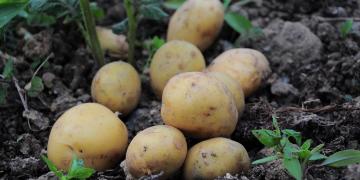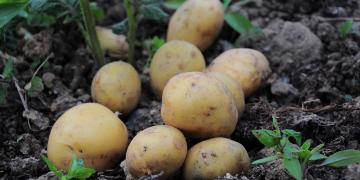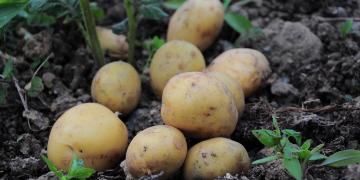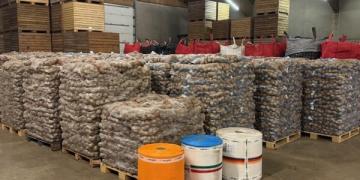Belgium: Favorable CIPC analysis on potato warehouses
In Belgium, the use of chlorpropham (CIPC) in potatoes has been banned since July 1, 2020. Compliance with this ban is monitored through sampling in potato warehouses across Europe.

This involves checking whether the (temporary) maximum residue limit is exceeded, which could indicate the use of CIPC. In the 2024-2025 season, 114 samples were taken in Belgium for this purpose. The results met the standard everywhere.
When a plant protection product is banned for health reasons, a European regulation is usually published setting the maximum residue limit (MRL) at 0.01 mg/kg (detection limit). The trade association Belpotato took initiatives in 2020 to help manage this problem. Belpotato provided the sector with a cleaning protocol for stores, but also helped find a solution for the implementation of a temporary MRL. The temporary MRL was initially set at 0.4 mg/kg by Regulation 2021/155 in 2021 and came into force that autumn. The MRL was not immediately lowered to 0.01 mg/kg, but the sector was offered the opportunity to reduce it systematically on the condition that the annual CIPC analysis results were submitted to potato stores.
New tMRL starting January 6, 2026
The results of these actions have shown a positive decrease in CIPC residues across Europe, thus meeting the tMRL. Based on data collected in previous campaigns, the European Commission lowered the tMRL for potatoes to 0.35 mg/kg (Regulation EU 2023/377). A further reduction of the tMRL to 0.2 mg/kg was recently voted on, which will come into effect on January 6, 2026. Belpotato.be maintained close communication with Belgapom regarding the sampling plan for last year and in the coming years. Belpotato.be also provided the sector with a safety warning for spraying as an alternative to the use of CIPC.
To measure is to know
Belpotato, with significant support from Belgapom, has been participating in this annual sampling, coordinated at the European level, for several years. CIPC residues were also monitored in greater depth during the 2024-2025 storage season. At the proposal of the European Potato Processors Association (EUPPA), the target for Belgium was again 220 samples. CKCert conducted the sampling, and Primoris conducted the analyses. Each potato processing company provided Belgapom with a list of their storage facilities, which served as the basis for CKCert’s sampling. During Interpom 2024, they were also able to indicate at the Boerenbond stand whether they wished to participate in these CIPC analyses at their potato storage facilities. Sampling and collaboration with the European umbrella organization EUPPA allow us to generate sufficient results that can be submitted to the European Commission to justify the tMRL.
Good results for Belgium
In the 2024-2025 season, 114 samples were collected in Belgium. The majority of these samples (93%) did not show CIPC residues. Only eight samples detected a CIPC residue above 0.01 mg/kg. The CIPC-positive samples had residue levels between 0.013 and 0.066 mg/kg. Therefore, all of these samples were below the current tMRL of 0.35 mg/kg. Even the new tMRL does not appear to pose a problem. The results show that CIPC residues in Belgian potato storage facilities continue to decrease annually. In 2025, the European Commission granted the industry’s request to reduce the reporting frequency to once every two years. The next sampling campaign will therefore take place in the 2026-2027 season.
Most of the samples taken during the last storage season came from West Flanders (22.81%), followed by East Flanders (19.30%), and Hainaut (18.42%). As in the previous season, the Fontane variety was the most sampled (58.77%), followed by Jelly (7%) and Bintje (6%). Sampling took place between January and May of this year.
These results demonstrate that farmers continue to implement these measures effectively and accurately. The intensive cleaning of cages and sheds is producing truly impressive results. We hope this trend will continue in the coming years.
Fuente:




